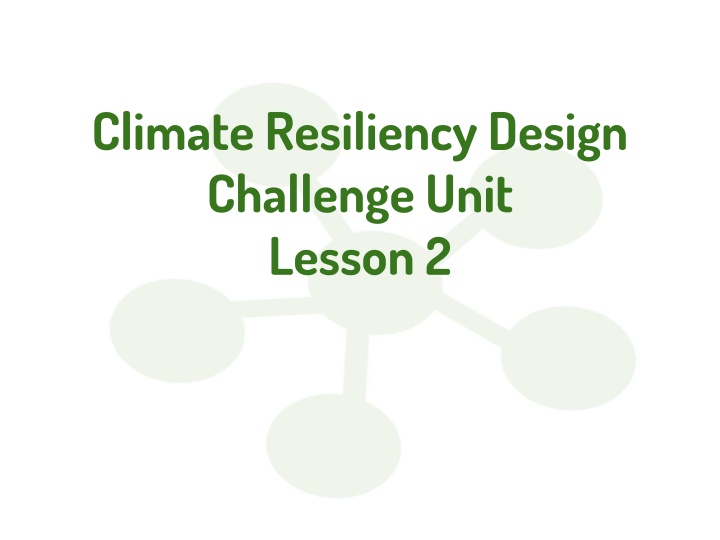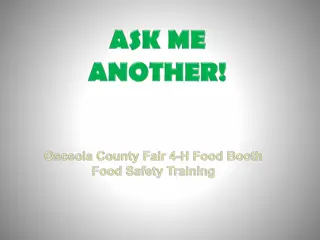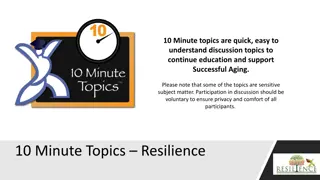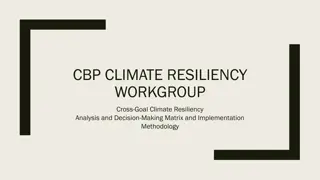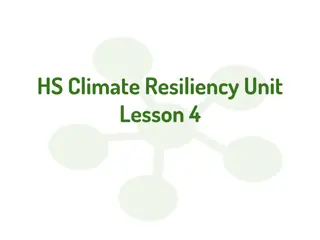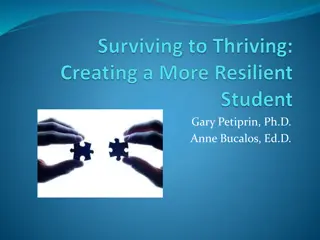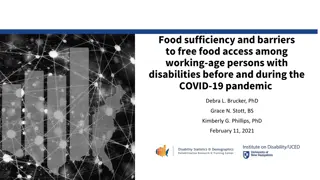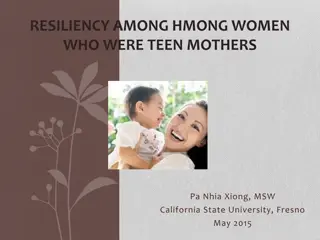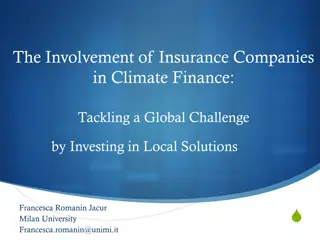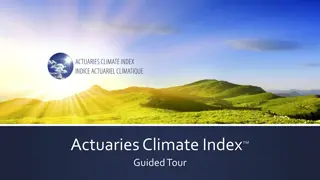Climate Resiliency: Food System Analysis
This lesson explores the complexities of the food system through various activities such as initial modeling, consensus building, and analyzing food waste. Students are prompted to consider different components of the system, potential areas for impact, and the application of mathematical and computational thinking. The session aims to foster critical thinking and problem-solving skills in addressing food waste issues in a school environment.
Download Presentation

Please find below an Image/Link to download the presentation.
The content on the website is provided AS IS for your information and personal use only. It may not be sold, licensed, or shared on other websites without obtaining consent from the author.If you encounter any issues during the download, it is possible that the publisher has removed the file from their server.
You are allowed to download the files provided on this website for personal or commercial use, subject to the condition that they are used lawfully. All files are the property of their respective owners.
The content on the website is provided AS IS for your information and personal use only. It may not be sold, licensed, or shared on other websites without obtaining consent from the author.
E N D
Presentation Transcript
Climate Resiliency Design Challenge Unit Lesson 2
Do now What did we figure out last class? What were the questions we came up with in the last class? What do we need to know to be able to recommend or make changes to the food system?
Initial Ideas What are some the parts (people, places, things, ideas, processes) of our food system? How do these parts interact? Who makes decisions within the different parts?
Initial Models On your Student Activity Sheet, draw an initial model of what you think the food systems looks like
Comparing Our Models What are some things that both you and your partner had in their models (or that we definitely all agree should be in this model?) What are some differences between your models (or things that we aren t sure if they should be in the models?)
Food Waste Article What are some key ideas about food waste you learned from the article? What information from the article is applicable to us? What components of the food waste system can we directly impact?
Consensus Building Where are some possible places we could have an impact? How can we study how much food waste comes from these different places? What would we do with that information? What other questions might we ask to help us figure this out?
Initial Ideas What do you think we could/should do to help us decide what the food waste situation is at our school? How should we record/keep track of the amount of food waste and who, if anyone, knows about it. Think about the DPS sustainability plan we looked at last class. What do you notice about the plan and could we implement it here at school?
Using Mathematics and Computational Thinking Answer the questions in your handout as we go through these as a class
Taking Stock What did these calculations help us figure out? What do we need to do in our school to better understand the food waste situation? What else are we wondering about when planning this design challenge?
Where should we go next? What should we do next class?
